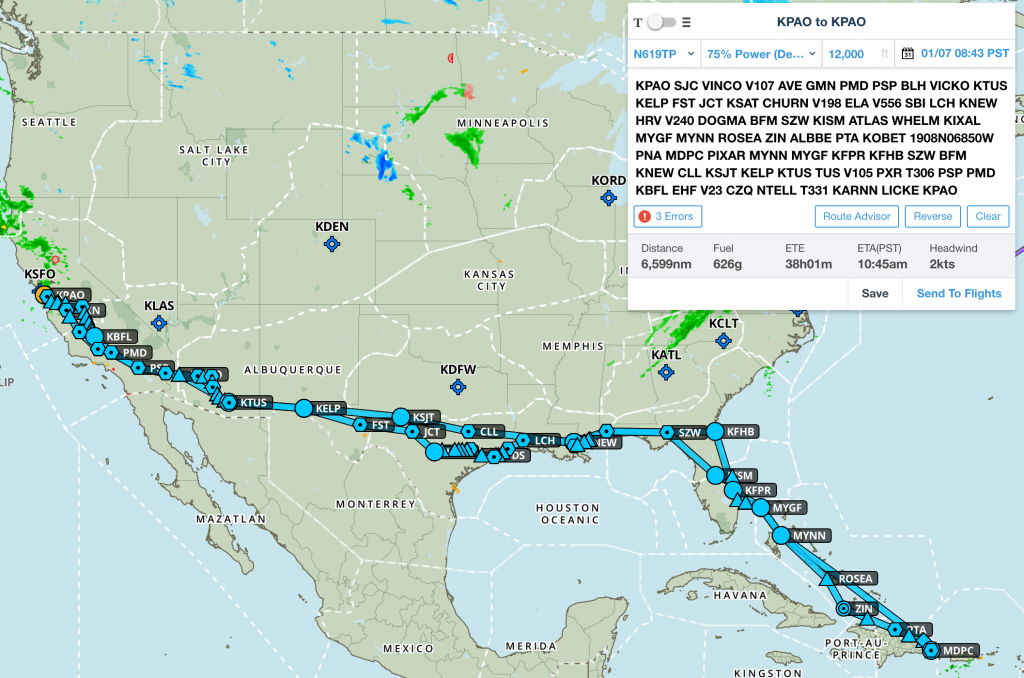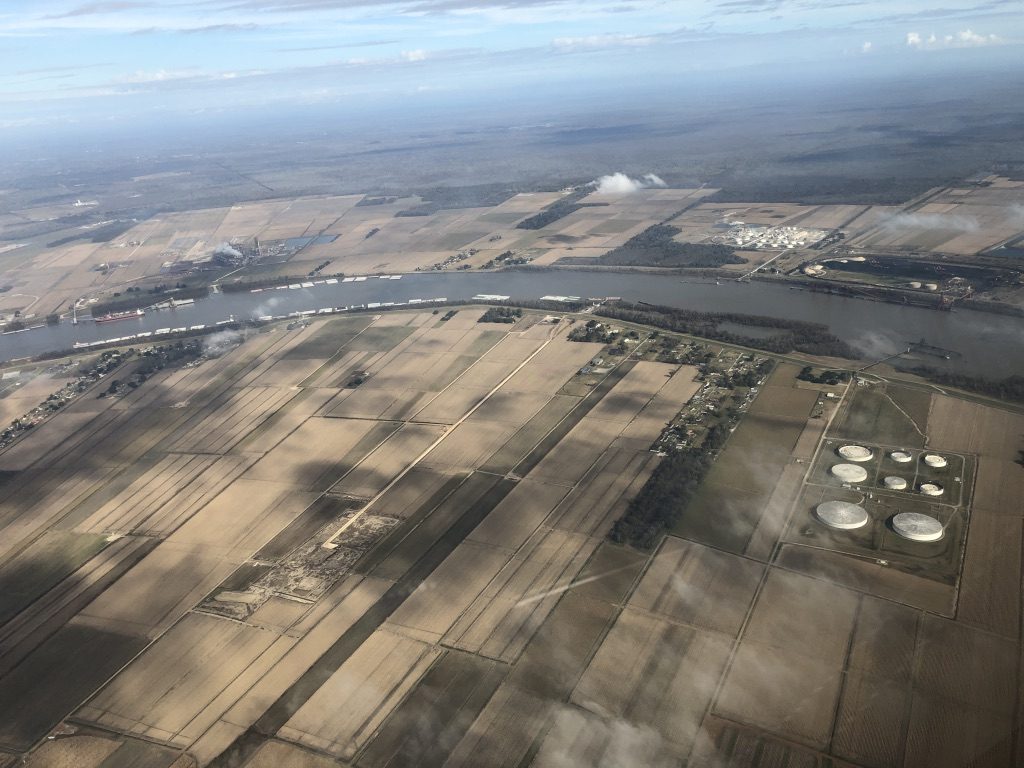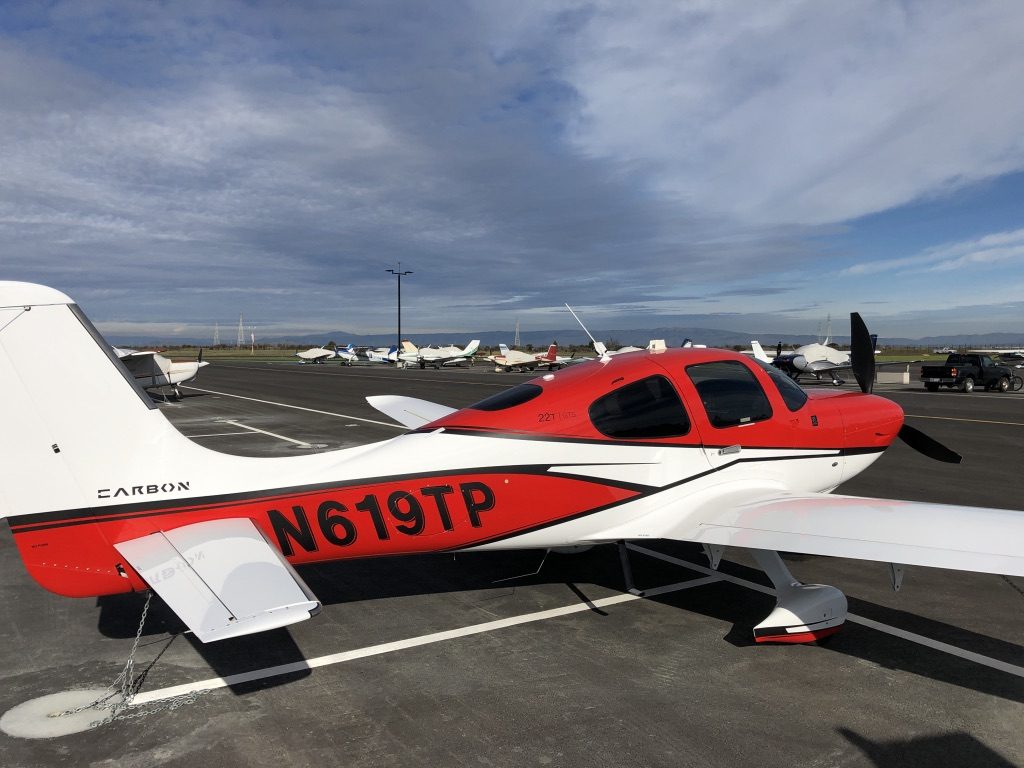N619TP is back from the Caribbean and safely parked on the ramp at Palo Alto Airport. It has been an amazing experience and I am still digesting the learning from it. For the detailed write up check out Part 1, Part 2, Part 3 and Part 4.

The approximate routing for the return trip is shown above. Total length of the trip is about 6,600 nautical miles (7,500 miles or 12,200 km). The flight had 14 segments, 6 to Punta Cana and 8 back. Heading west will take you more time because of headwinds (up to 40 knots) and customs when entering the US. Longest segment was 5.2 hours from Nassau to Punta Cana. Picking a route far south was the right choice as it kept us out of clouds with icing.
Continue reading “Flying a SR22T from the West Coast to the Caribbean – Cost, Logistics and Lessons Learned”

